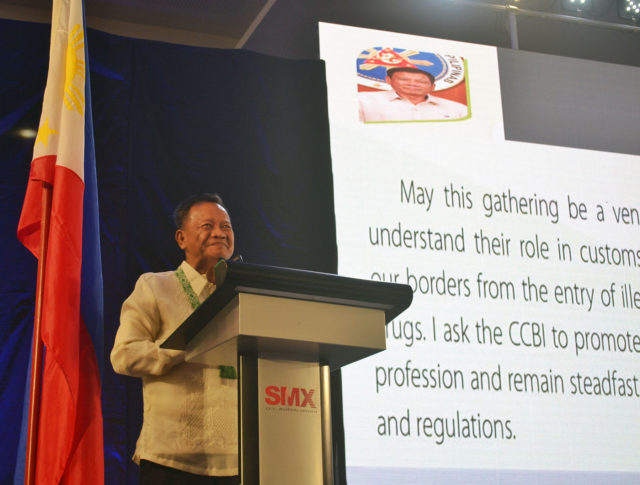
The Philippine Bureau of Customs (BOC) is tapping international institutions for the implementation of its automation project, according to Customs Commissioner Isidro Lapeña.
The customs chief, in an interview with PortCalls on the sidelines of the Chamber of Customs Brokers, Inc. 27th National Convention in Davao City held November 4, said he will be meeting this month or the next with World Bank, which is preparing a modernization plan that includes an information and communications technology (ICT) upgrade for the customs bureau.
The Washington-based lender said the US$200-million Philippines Customs and Trade Facilitation Project (PCTFP) aims to support export-led economic growth by assisting BOC in reducing trade costs, improving transparency, and increasing revenue collection.
READ: WB designing $200M modernization plan for PH customs
A component of the project, which costs the most at $95 million, will support the modernization of BOC’s core ICT systems, related technical infrastructure, and internal capacity to manage and operate a sophisticated ICT operation so as to ensure the ICT system contributes to improving operational effectiveness, integrity, accountability, and organizational performance. The component project will also see the development of a long-term ICT strategy, connection, and interoperability with whole of government National Single Window (NSW) system and port community systems.
Lapeña said World Customs Organization secretary general Kunio Mikuriya has also offered to help in the BOC automation project. Mikuriya made the offer when they both attended the 12th Asia Europe Meeting Customs Directors-General and Commissioners Meeting held in Germany last month.
BOC is also looking at best practices in automated customs procedures in countries such as Japan and South Korea, Lapeña added.
He is fast-tracking the full automation of BOC’s processes to address corruption, solve delays in the processing of shipments, and increase revenue collection.
Citing as an example the automated queuing system at BOC’s Formal Entry Division in the Port of Manila, he said this prevents customs employees from colluding with stakeholders or resorting to bribery as a way to fast-track processing of shipments.
Aside from internal automation, Lapeña also noted the implementation of TradeNet, an online trade facilitation portal to be launched in December this year.
The BOC chief said the platform, which will also serve as the country’s National Single Window (NSW), will be a big help in improving the services of BOC. Since BOC will be interconnected with other agencies such as the Bureau of Internal Revenue, data will be readily available and can be used to check irregularities.
READ: TradeNet is online platform for PH National Single Window
TradeNet will also serve as the Philippines’ link to the Association of Southeast Asian Nations Single Window gateway, which will initially include 16 trade regulatory agencies, and will later progressively place on board a total of 66 government agencies over the next two to three years.
The Customs Modernization and Tariff Act, which was signed into law in 2016, mandates paperless customs transactions, and in accordance with international standards, states that BOC “shall utilize information and communications technology to enhance customs control and to support a cost-effective and efficient customs operations geared towards a paperless customs environment.” – Text and photo by Roumina Pablo








